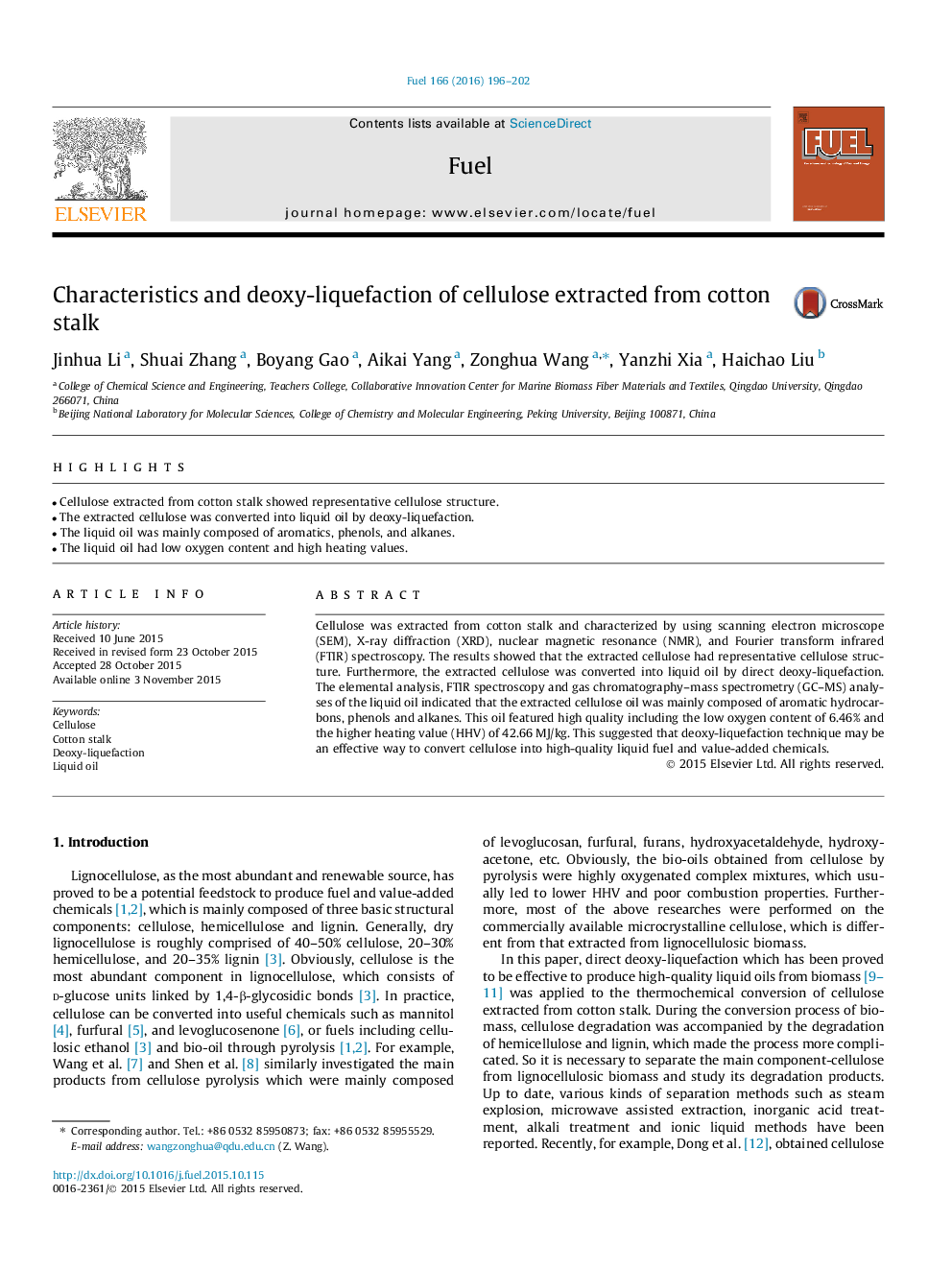| Article ID | Journal | Published Year | Pages | File Type |
|---|---|---|---|---|
| 6634206 | Fuel | 2016 | 7 Pages |
Abstract
Cellulose was extracted from cotton stalk and characterized by using scanning electron microscope (SEM), X-ray diffraction (XRD), nuclear magnetic resonance (NMR), and Fourier transform infrared (FTIR) spectroscopy. The results showed that the extracted cellulose had representative cellulose structure. Furthermore, the extracted cellulose was converted into liquid oil by direct deoxy-liquefaction. The elemental analysis, FTIR spectroscopy and gas chromatography-mass spectrometry (GC-MS) analyses of the liquid oil indicated that the extracted cellulose oil was mainly composed of aromatic hydrocarbons, phenols and alkanes. This oil featured high quality including the low oxygen content of 6.46% and the higher heating value (HHV) of 42.66Â MJ/kg. This suggested that deoxy-liquefaction technique may be an effective way to convert cellulose into high-quality liquid fuel and value-added chemicals.
Related Topics
Physical Sciences and Engineering
Chemical Engineering
Chemical Engineering (General)
Authors
Jinhua Li, Shuai Zhang, Boyang Gao, Aikai Yang, Zonghua Wang, Yanzhi Xia, Haichao Liu,
